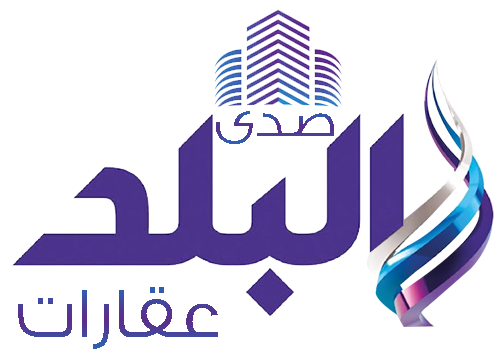I believe that the Egyptian economy has reached a *“strong position”* that enables it to withstand any sudden external shocks or unexpected withdrawals of foreign indirect investments, particularly *“hot money”*—which is known for its fast movement and frequent entry and exit from higher-yield financial markets.
Hot money refers to short-term foreign investments that flow into a country either due to higher returns or temporary economic conditions. Its main source is usually wealthy countries that suffer from low growth rates and low interest rates. These funds—seeking the highest profit anywhere—originates from banks, financial institutions, or investment funds. Most of the time, they are invested in government debt instruments such as treasury bills, bonds, and stocks, or appear as bank deposits.
So, what’s the story? And why are we no longer afraid of their sudden exit?
Once again: this type of capital chases quick, high returns, meaning we should not expect it to “cool down” in the host country. If economic circumstances change and another market becomes more profitable, the money quickly exits. Its volume is difficult to accurately estimate due to constant inflows and outflows, and numbers cited about it are often *“approximate.”* The same applies to hot money in the Egyptian market, often estimated at between 20 and 22 billion US dollars.
It should be noted that these funds may be beneficial if used to support production requirements or to stabilize the exchange rate. However, they may also be harmful if they drive inflation upward—where too much money chases too few goods.
That is why many countries resort to what is known as *“sterilization.”* Argentina and several Asian countries, for example, have restricted purchases of short-term government debt instruments, imposed restrictions preventing exit for at least three months after entry, or applied taxes on capital gains. Egypt also attempted this in 2023 when a draft law was presented to Parliament, but it was never enacted.
### Hot Money in Egypt
In Egypt, the entry of hot money into the market has been repetitive. Investors purchase treasury bills—after converting foreign currencies into Egyptian pounds—for periods ranging from three months to one year, benefiting from high interest rates and tax exemptions on these profits.
Similarly, their exits have been just as frequent. In 2018, about 15 billion US dollars left the country, while in 2022—after Russia’s invasion of Ukraine—Egypt witnessed an outflow of roughly 21.5 billion US dollars, especially after the US Federal Reserve raised interest rates at the time to 4.5%. This sudden exit reignited parallel-market activity in foreign exchange, primarily in US dollars.
However, when the Central Bank of Egypt decided to float the currency in March 2024, these funds flowed back into Egypt—around 20 billion US dollars invested in treasury bills. Soon after came the Ras El-Hekma investments (the first tranche of 28 billion US dollars in direct investments), which eased the potential negative effects of any future sudden exit of hot money.
At the same time, the Egyptian economy invested in strengthening itself, whether through gradual increases in GDP growth rates, expansion of foreign currency revenues, or reducing the foreign debt service burden (installments and interest) to less than 20% of foreign exchange proceeds. Most importantly, Egypt’s foreign currency reserves rose recently to more than 49.5 billion US dollars, enough to cover the country’s food import needs for six months.
Not only that, but the increasing volume of foreign currency inflows—and the likelihood of its sustained growth—boosted the net foreign assets of the banking sector to 14.7 billion US dollars by the end of May, compared to 13.6 billion by the end of April. This increase was notably concentrated in commercial banks, whose net external liabilities rose from 1.6 billion to 4.8 billion US dollars, a monthly jump of 3.2 billion.
We have also achieved *“balance”* between foreign currency resources and uses (imports, debt service, etc.). In fact, there is a possibility of achieving a surplus of up to 3 billion US dollars by the end of September.
### Structure of Egypt’s Reserves
Egypt’s foreign reserves reached around 49.5 billion US dollars by the end of July. They are composed of relatively stable sources, including gold (126 million tons, representing 21% of reserves), Suez Canal revenues, part of export earnings, government securities and bills denominated in US dollars, as well as a basket of global currencies such as the British pound, Japanese yen, and Chinese yuan.
This reserve is prudently managed by a dedicated Central Bank committee, which aims to achieve three goals simultaneously: safety, liquidity, and improved returns from investing a portion of these reserves in international markets.
### Positive Indicators
The improvement in Egypt’s economic indicators—especially foreign reserves—prompted the Central Bank to raise the daily cash withdrawal limit from 250,000 Egyptian pounds to 500,000. It also maintained benchmark overnight interest rates unchanged, at 24% for deposits and 25% for lending, alongside other monetary measures such as facilitating local and international card transactions and raising the monthly ceiling for exporting companies’ foreign currency use to 1 million US dollars for import needs.
In conclusion, experts suggest that Egypt is close to achieving the *“comfort factors.”* These include: covering imports with reserves, improving short-term foreign debt to export earnings ratios, aligning short-term debt with reserves, and maintaining inflation at 14% and unemployment at 11%.
Indeed, *“we have learned the lesson,”* as the former finance minister said. Hot money, as the Prime Minister clarified, does not count as part of the country’s official foreign reserves












